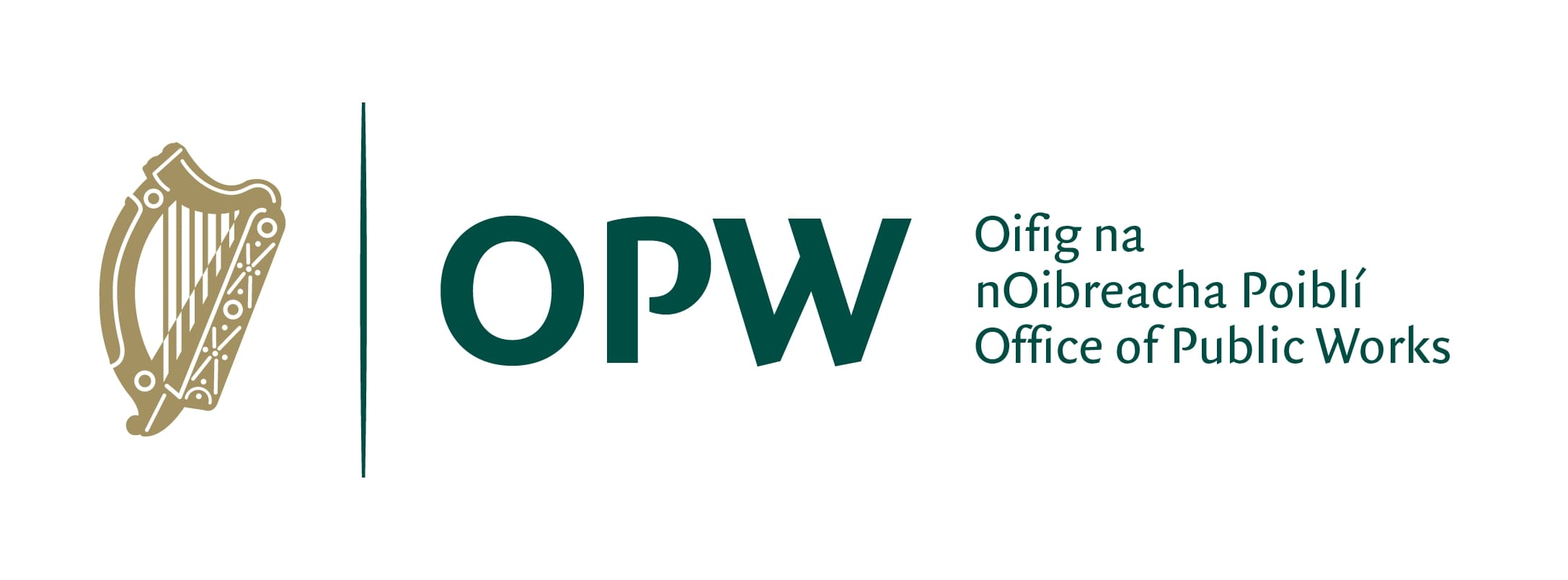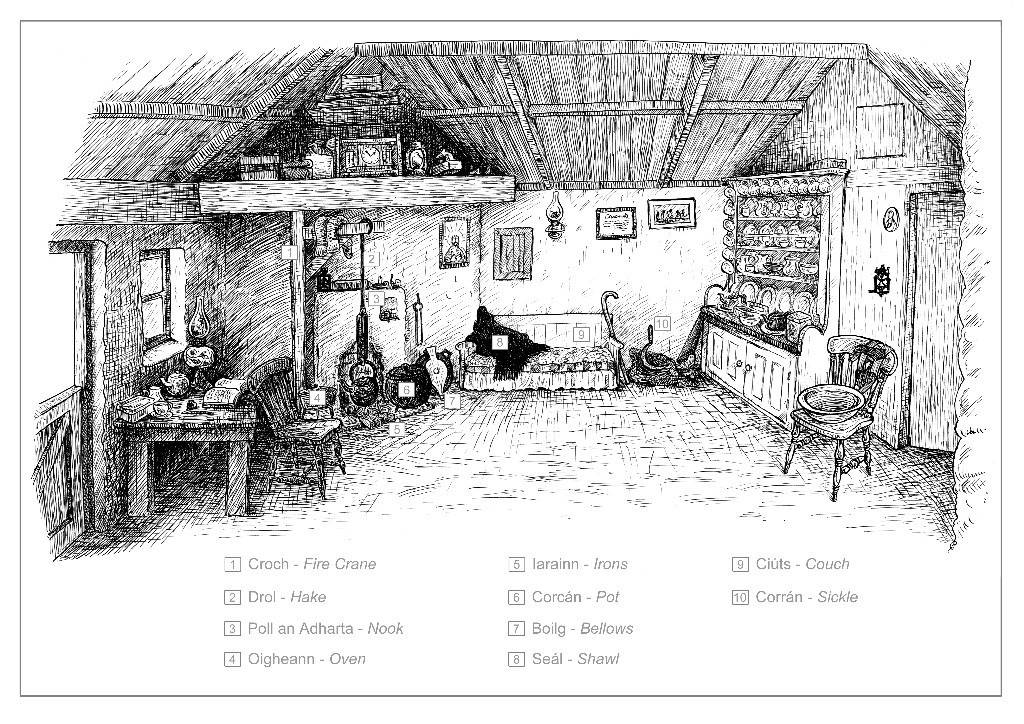An Baile
It is likely that modern settlement was centred initially on the lower half of the village and progressed uphill. The 1842 edition of the Ordnance Survey’s six-inch map shows two parallel terraces of three houses (since rebuilt) in this area, close to the small headland of Rinn an Chaisleáin which overlooks the harbour…
…The village is sited on a hill slope at the eastern end of the Great Blasket Island, at a point nearest the mainland. Buildings are grouped in clusters, terraced in some of the oldest parts, and otherwise running parallel to one another. There is a distance of some 200 metres from the lower end of the Lower Village to the highest sited building in the Upper Village, a climb of fifty metres. The village extends about 300 metres along the side of the hill, the slope of the hill decreasing as it approaches the sea, ending abruptly in 20-30m high cliffs. As was the practice on the mainland, the site was chosen primarily for the shelter the hill-slope offered, and the older, vernacular buildings, all of the orientated NE/SW) are set into the slope at right angles to the contours. The front of these buildings, therefore, face towards the south, another characteristic of vernacular building in the district.
Is i gceann de sna tighthe meánacha bhí mo chliabhán-sa. Tigh beag cumhang go maith dob’ éadh é ach é bheith slachtmhar, an méid a bhí ann de, mar do bhí m’athair ana-chliste is níor bhuail aon leisce riamh mo mháthair. Turn olla, aicí, turn lín, cardaí; do bhíodh uirthi snáithín do shníomh do’n dtáilliúir anuas de’n chuigil le n-a turn féin. Ba mhinic a shnímh sí do bhudóga ban eile, leis é ná bíodh aon chló ortha féin chun a dhéanta agus dá mbeadh féin ná leigfeadh an leisce dóibh é.
Timpeall deich mbliana tar éis pósta dhom do thógas tigh nua. Níor shín fear cloch chugham, ná mairtéal, faid a bhíos á dhéanamh agus do chuireas féin ceann air. Ní tigh mór é; mar sin féin dá mbeadh Rí Seoirse ar a laethanta saoire ar feadh mí ann níorbh é gráinneacht an tighe ba ghalar báis do.
Áiríodh 65 foirgneamh ar fad, ar fothraigh a bhformhór, i suirbhé a déanadh ar bhaile an Bhlascaoid sa bhliain 1991. Tráth, bhí suas le 29 dtigh cónaithe ar an mbaile agus bhíodh ainmhithe acu i bhfoirgnimh eile. Bhíodh ainmhithe feirme acu ina dtithe cónaithe chomh maith, uair dá raibh.
Níl ach beagán acu seo a bhféadfadh duine maireachtáil iontu anois le haon chompord, mar go bhfuil an saol is an aimsir tar éis fothraigh folmha a dhéanamh dá bhformhór agus cuid acu leáite isteach ar an gcliathán cnoic ar a bhfuil siad suite. “An Baile a thugadh na Blascaodaigh ar an gcnuasach de thithe cónaithe a bhí acu.
Tógadh na tithe ar fad i bhfothain an chnoic agus na binnteacha thíos iontu ar thaobh na farraige. Thóg Bord na gCeantar gCúng cúig cinn de thithe nua c. 1910 agus tógadh tigh lóistín dhá stór eile ar an dtaobh ó dheas den mbaile ina dhiaidh sin.


